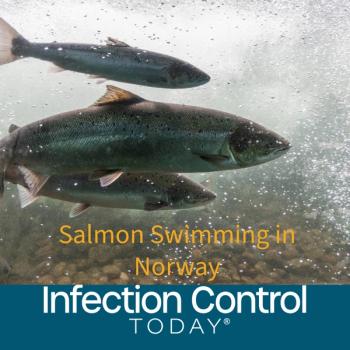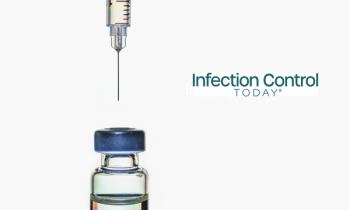
Hydroxonium Oxide Coatings May Limit Environmental Contamination Between Cleanings
The antimicrobial effects of a coating of molybdenum trioxide (MoO3) has been recently described. The metalloacid material produces oxonium ions (H3O+), which creates an acidic pH that is an effective, non specific antimicrobial. Tétault, et al. (2012) determined the in vitro antimicrobial activity of molybdenum trioxide metalloacid-coated surfaces.
Â
Metalloacid-coated and non-coated (control) surfaces were contaminated by exposing them for 15 minutes to microbial suspensions containing 105 cfu/mL. Eleven microorganisms responsible for nosocomial infections were tested: two Staphylococcus aureus strains (the hetero-vancomycin intermediate MRSA Mu50 strain and a ST80-PVL-producing MRSA strain); a vancomycin-resistant vanA Enterococcus faecium strain; three extended-spectrum beta-lactamase-producing Enterobacteriaceae strains; a MBL-producing Pseudomonas aeruginosa strain; a multidrug-resistant Acinetobacter baumannii strain; a toxin-producing Clostridium difficile strain; and two fungi (Candida albicans and Aspergillus fumigatus). The assay tested the ability of the coated surfaces to kill microorganisms.
Â
Against all non-sporulating microorganisms tested, metalloacid-coated surfaces exhibited significant antimicrobial activity relative to that of the control surfaces within two to six hours after contact with the microorganisms (p < 0.001). Microorganism survival on the coated surfaces was greatly impaired, whereas microorganism survival on control surfaces remained substantial.
The researchers suggest that, facing the continuing shedding of microorganisms in the vicinity of colonized or infected patients, the continuous biocidal effect of hydroxonium oxides against multidrug-resistant microorganisms may help limit environmental contamination between consecutive cleaning procedures. Their research was published in
Â
Reference: Tétault N, Gbaguidi-Haore H, Bertrand X, Quentin R and van der Mee-Marquet N. Biocidal activity of metalloacid-coated surfaces against multidrug-resistant microorganisms. Antimicrobial Resistance and Infection Control 2012, 1:35 doi:10.1186/2047-2994-1-35
Newsletter
Stay prepared and protected with Infection Control Today's newsletter, delivering essential updates, best practices, and expert insights for infection preventionists.




